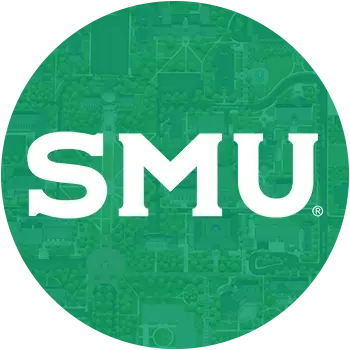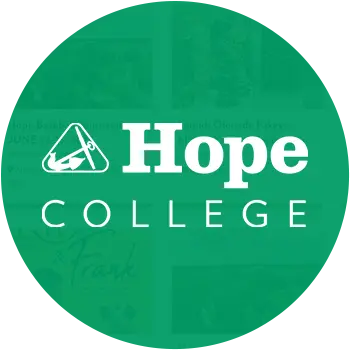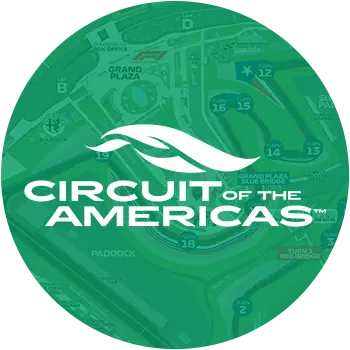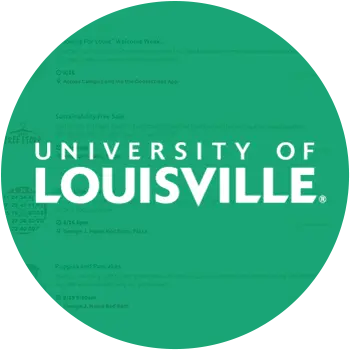Episode 76: Are You Using Student Insights to Inform Marketing Decisions? Higher Ed Demand Gen with Allison Turcio

Read the transcription
Shiro Hatori
Hello, everyone. Welcome to the higher ed demand gen podcast hosted by concept 3d. If you like our content, please follow and subscribe to us on Spotify, Apple and Google. And if you’re on Apple, please leave us a comment. We’d love to hear your thoughts. My name is Shiro Hatori. And I will be your host today. And I have a question for you. Are you using student insights to inform marketing decisions. And for that conversation today, I’m very excited to have Allison tercio join us. She is the Assistant Vice President for Enrollment and marketing at Siena College. But she has a lot of other things going on. She’s also the host of the application podcast by enroll of phi. And more recently, she has her own curated nurse newsletter called the higher ed marketers digest, which I believe you hit what is it episode or newsletter number 11 or 12. This past week? Yeah,
Allison Turcio
I think 12 comes out this week, although you might want to cut that because I don’t know when you’re actually putting this right. Sorry. I shouldn’t have said that.
Shiro Hatori
No, it’s all good. It’s all good. Well, welcome to the show us. And it’s great to have you.
Allison Turcio
Thanks for having me.
Shiro Hatori
I know and it was great to briefly meet you also at ama the other week as well. So it’s good to always meet all the guests in person. I do. I do ask all my guests this one icebreaker question, which is what do you love about higher ed?
Allison Turcio
Yeah, I really just believe in it. I’m one of those Die Hard. I believe education can make the difference in people’s lives. I think if higher education can get its act together and work more as one entity. Really powerful change can come about. And I just I believe in lifelong learning. I’ve got degrees all the way up through doctorate. I love being in school. And I also teach in addition to my work at Siena, and the podcasts and all of that. I actually teach marketing classes at the college. I’m so lucky. So I just really believe in education. I’m a true believer.
Shiro Hatori
Thank you for sharing that. Well, you know, you’re talking about your role at Siena and also how you’re teaching as well. Can you tell us a little bit more about your responsibilities and your day to day?
Allison Turcio
Yeah, so I have a bit of a hybrid role that sort of enrollment management side and marketing side. But I do lead the marketing team at the college and that is college wide marketing. And also includes enrollment, communications, market research, social media. So I am responsible for college wide marketing, but we work in a really integrated way at Siena, across admissions, marketing, enrollment management, financial aid, to sort of all work in one strategy together.
Shiro Hatori
Fantastic. And I know we talked about this for a while in our previous call, but given your role and your ability to kind of work across departments, we talked about using student insights to really inform decisions that marketing makes right can you tell us a little bit more about what that looks like?
Allison Turcio
You froze on me.
Shiro Hatori
Oh, I did. Huh? Give me one second. Let’s pause for a minute. I don’t know what is going on. But this Riverside platform has just been giving me so many issues. What do you use to record with unroll? Fie.
Allison Turcio
We use Riverside but I haven’t really ever had issues with it.
Shiro Hatori
Okay, I wonder Give me one second. I’m just gonna close more tabs to see if that helps.
To me another minute. Sorry about that. No worries.
Okay, let’s make it give it another shot here. Didn’t really change anything but my internet seems to be fast enough. I’ll count out for five and I’ll start with the topic around student insights and I can get started and then pull you into the conversation. Okay. Cool. All right. Okay, great. And I know in our previous conversation, we were talking a little bit about your role and how you’re integrated between both marketing In enrollment, and now you’re using student insights to inform decision making in marketing. Can you tell us a little bit more about what that looks like?
Allison Turcio
Yeah, I mean, I think the main thing is opening your mind to what can be used as insights to help drive decision making. So I think about things like, we will use data from students applications, what are they putting in on the application? What are they talking about? There are certain fields that we that we really pull in, and we do qualitative data analysis on those fields in the application, I think about what they’re saying back to admissions counselors and financial aid counselors, we analyze what questions they have, we analyze what’s on their minds to help understand them better. And then on an individual basis, we look at a student, and we really try to discover what’s important to the student, What connection do they need to make, and then we build communications that are that personal, I mean, we really write the email out one to one for many, many of the students where we can, you know, it’s, it’s not easy to scale that. But if you can use data to inform which students to target with that kind of one to one extremely personal outreach, we do reap the benefits from that. So we just really think, very broadly, I think about what can be used as student insights. Gotcha.
Shiro Hatori
So instead of just collecting data and waiting a few months to report on it, you’re actively doing something about it, like immediately, like following up one on one and, you know, being very direct between messaging. Yeah,
Allison Turcio
and we’re really using what they’re telling us about themselves to do that, you know, it’s we have other market data, we have a tool called Market view, which I highly, highly recommend, if if you don’t know what it is check them out. And that lets us compare our our enrollment and admissions data point in time, date, date to date, year over a year versus other groups of colleges, say other colleges in New York or national or other private colleges, right. So we have that, you know, sort of high level data, how are we performing against the market? And also, of course, we already always had data on how we’re performing first ourselves prior years. But what I’m talking about is really like getting down into the student, the student files and what can what the students are telling us in the students? What What can their communications to us, help inform our marketing? And
Shiro Hatori
have there been any learnings? We’re talking more like one on one conversations here, right. But everything that’s been rolled up from all those conversations put together, has there been anything that’s been brought up more at the mark, calm level that you’ve learned from these interactions?
Allison Turcio
Yeah, I think it’s really helped form the overall themes that we use in our marketing and our communications, because when we understand what matters to students, we can we can use it in our in our marketing, but I think the bigger thing is that we actually use their words. You know, like, let’s not, like institutionalize the thing that they’re talking about, let’s use the words that they’re using when they talk about those things. So I think it helps check ourselves a little bit on vocabulary. And how they talk about it. It’s things as simple as they don’t say, I deposited at a college, they say, I committed to a college, you know, so there’s language things that can help us just better speak to them in whatever promotional material or communications that we’re doing.
Shiro Hatori
That’s, that’s fantastic. That actually reminds me of a session that I went to NAMA with. And, and I think from San Antonio, she was talking about, and Peters. She was talking about how they used social mobility and a lot of their PR campaigns. I saw that one too. I think I would maybe met you there. But yeah, it was they basically did market research and found out like 70% of their community or whatever, I forget the exact numbers, but they didn’t understand what social mobility meant. So having it be the key focus of your keyword is is not going to have as much impact.
Allison Turcio
And they found something about being a Hispanic Serving Institution. Versus I think they maybe there was a Spanish language piece that performed better than that. But yeah, but if they had, they might not have needed to do the market research, to be honest, if they had been looking at the students and the language that they use to describe the school possibly.
Shiro Hatori
That’s fantastic. And is there anything else you’re seeing as of recent, I think you mentioned that you’re You’re considering doing a little more traditional mail than you used to before as well, just speaking, specific tactics?
Allison Turcio
Yeah, you know, the digital space is getting very expensive and very competitive for our students. Right. I know, I’m not the only college in touch with, with our students. And so we used to have an edge, I think, because we had these really ultra, ultra targeted strategies for how we would use use digital and use our student list to market directly to their households. But lots of people are catching on to that now. So it’s like, what’s the next edge? How do you? How do you sort of keep that going? And, and one of the things we’re doing is we’re doing more print, but we’re doing more personal print. One of the things that we’re we’ve added into our communications this year is a admit letter for parents. So it’s a letter that says, you know, how thrilled we are to welcome the whole family to the community and credit and congratulations to you, too, because this is a win for you as well. And again, we can’t scale this for all 6000 plus students that we will admit, but we have used data to help us target certain students and uncertain students letters, we will add a line in that is specific to that student and something very special they have accomplished in their lives. And we will say something like, we’re very impressed with Allison’s leadership and scouts over the years. You know, we will say something about that students. So we’re leveraging different ways of getting in front of people. I guess I shouldn’t say different, because it’s a traditional way. But we’re doing it in a very different way and trying to be more personal.
Shiro Hatori
Exactly. That makes a lot of sense. And how do you pick and choose? Obviously, it’s not scalable to get that personalized with direct mail. But do you again, use those data points we talked about earlier, when you have specific information? Yeah. And
Allison Turcio
on those data points, it’s, it’s, well, I should take that back. There’s two ways we do it. One is more high level, we have sort of predictive modeling that helps us see what students are most most likely to come to see and anyway most likely to enroll, and then maybe the ones that aren’t so likely. So that helps us right, because the ones who aren’t as likely are the ones that, right you want to target for something like this. But also, as we’re reviewing applications, if there’s a student that just has something really special in their record, then we will put them into because why would we miss the opportunity to mention that to their parents, because we know their parents are proud of that thing that they’re doing right? So how can we put that in? So I guess it’s a mix, it’s a mix of that really personal one to one review of each student and where they are and what they’re interested in? Plus, using the big data to help inform.
Shiro Hatori
That’s fantastic. And I’m, I’m a marketing nerd. So I’m just curious, how do you actually measure like, how, how were you able to tell, hey, this this tactics actually working? were you seeing like higher percentage of commits and deposits from this audience?
Allison Turcio
Well, this Well, overall, I know that the one to one the students that we have personal one to one communications with our last time we ran it, they’re 2.4 times more likely to enroll. So I know that already, the parent letter example, that’s something new this year, but I know the audience last year, I have that. And I know who they are this year. So I will be able to follow through and be able to see if we made a difference among the the audience versus the prior year.
Shiro Hatori
Gotcha. Thank you.
Allison Turcio
Oh, yeah, go ahead. Never, I almost never embark on a tactic or strategy that I can’t measure in in some way like that. I can’t know for sure that the investment of time or investment or money was worth it.
Shiro Hatori
That’s fantastic. Yeah, that I was really curious, because it’s a hard thing to measure. Right. But if you have a system in place beforehand, yeah,
Allison Turcio
that’s the key, you have to have a system where you are coding, for lack of a better word, every interaction a student has, and what that action is. So when a student responds to a personal one to one email, we code that, so we’re tracking that. So you have to do you have to definitely have the baseline or you’re not going to know, I mean, I think some of us know, in general, the more personal, right, the more segmented that’s always going to be better, right? But if you’re tracking it, then you’re gonna have the actual data that gives you an ROI on that resource.
Shiro Hatori
Yeah, absolutely. Yeah. And I think the hard part for myself, even as a marketer is like picking and choosing the right people, right? And that’s because if you do it for every single person, it’s you’re not going to have enough time in the day to there’s not enough time in the day at all to cover everyone. So creating system to figure out which subsets do you need that communication is? I think, for me the hardest part? Well, I think
Allison Turcio
if you’re at an institution, part of it is, who do we need? Right? who’s who? Who are we hoping to have in next year’s freshman class or transfer class or graduate class? Whatever it is. And so it might, the answer might be different for everybody. But you really have to connect to the higher level enrollment goals of the college. Well, if you’re trying to increase diversity, then perhaps you would be targeting students of color. With this type of personal communication, maybe that’s your audience. And by the way, given, given what’s happening with college admissions, and how we can’t use race conscious college admissions anymore, it’s now illegal to do so these are some of those kinds of strategies that you can implement to counteract. Right. So yeah, you can’t admit them based on that. You can’t do that. But can you can you communicate to them? Can you advertise to them? Can you make sure that your applicant pool is diverse because of the in the first place? Because of the strategies that you’re using? Yes. Those are all eligible?
Shiro Hatori
Absolutely. I actually covered the same topic with internal employer concept or exactly on this topic about how you can still meet your institutional goals if you have enrollment goals based on diversity. And you can use things like location, right geography, income language, like we mentioned, San Antonio. So that’s, that’s really cool. I’m glad you mentioned that. Taking a step back and looking more at high level topic here, I know you had a dissertation topic around a student perspective on searching for a school. Can you tell us a little bit more about your learning and your research there?
Allison Turcio
Yeah, sure. So I did a research project that was collecting insights from students about what the college search experience is, like, from their perspective. And in their own words, that’s what I really wanted to get at. Because, you know, I’ve worked in this field for a long time, many of my colleagues have worked in this field for a long time. But do we really understand what their experience of this college admissions and search processes? Maybe not? Right? Yes, sir. Maybe maybe. So maybe not that but I went in sort of with an open mind about it could be either way. And what I discovered from really, in depth interviews with students is, was my method was that there were three themes that really drive what students say, is meaningful, from their perspective in the college search process. And the first one is this need for belonging. And I think we talk about this, this is where this is one of those examples with language, we talk about this as fit, right, a lot of times student college fit, they think about it as belonging and isn’t. When you think about the hierarchy of needs, belonging is on there, right? So it makes sense that we, as humans, this is something we seek out. But it is a meaningful piece of the college search process, that they’re looking for that sense of belonging. The other thing was this idea of wanting to feel confident in the decision making. And that has all kinds of things connected to it. It’s like they want to feel confident that that though it’s a good investment, right? They want to feel confident that they’re going to get a great education. But they also want to feel really validated and assured when they go and say to other people, I’m going to see in a college, that’s where I’ve decided to go they want, they’re looking for that assurance, and their biggest fear, by far is making the wrong decision. So it’s something that we have to grapple with and think through, because we can help, we can help that we take the stance at Siena, really very much that, you know, it doesn’t serve us to have a student come here, and it’s not right for them, right. So we really try to play that role in helping students reflect on what they need, what they’re looking for, to help them find the right school. And then the last one was this idea of forming a vision for their future. It happens really early on. And, you know, for some students, the idea of will I go to college is a question is that well, I and then there’s other students that never even thought that college was a given. And so we really need to grab, we need to understand that there’s different types of students out there and so they they form a vision for their future. And then they start picturing If college is part of that future. They they, they form a picture in their head of what the college experience should be like. It could be from TV, it could be from movies, it could be from siblings, cousins who have gone to college, but once they have that picture of what they think their college is experience should be, they are looking for that. It’s very hard for them. I mean, they’ll fully admit to, like I was looking for a TV show college, I want my college experience to be like exactly what I saw on TV. So we as colleges need to understand what those cues are, that have formed their vision and what they’re looking for. And we need to we need to speak to them.
Shiro Hatori
That’s amazing. That’s fantastic. Thanks so much for sharing that. I, I know for a fact, my decision in picking a school had a lot to do with points, your point one and three, which is the belonging is our community for activities I like to do, which is skiing, and then fitting that vision where like, I did want to experience that big, you know, big state school experience. And so that was kind of, you know, related probably to media and movies. But that’s, that was the vision I had. And that ultimately led to my decision as well. So what was interesting like that, when
Allison Turcio
you think about surveys that often go out about this, like, what, what helped what formed your vision, what led to it? It’s cost, right? Well, cost is about is it right? Or not? Am I making the right decision, because you have to feel like the cost is worth it. And affordable, right? It goes back to it. Availability of majors always up there? Well, you have to have availability, and you’re looking for good reputation of an academic program. So you feel like you’re making the right decision fit. That speaks to belonging in the clubs and activities, like you’re saying, Alright, so even on those more one dimensional type of ways that we asked students what factored into their decision, you can see how it connects back to these themes.
Shiro Hatori
I really liked that you tied costs to the fear and confidence aspect about making the right decision, because that makes a lot of sense. Especially for someone who is going to be going into student debt. Yeah. How
Allison Turcio
could you? How can you feel like you’re making the right decision without cost being in the mix? In your mind? Of course it is. They actually even say the amount that you get, that you give or get from a merit scholarship, makes them feel like validated or affirmed, like and valued how much this this school want me, there’s so so. So a lot of times we think about these really rational ways that students are, of course, going to look at factors and write pros and cons and figure it out. But even underlying those very rational factors that they might verbalize, there’s this emotion that’s driving the decision making.
Shiro Hatori
Right? I love that you brought that up, too. I think that’s one thing I learned to like in marketing and sales one on one is usually purchasing. This may be more ecommerce or commerce, but it’s an emotional decision. At the end of the day, the rational Yes, points add up. We’re all
Allison Turcio
consumers. We’re all consumers. So we should admit and recognize by now that we make emotional purchases, and college is no different. That’s really what it is. We like to believe it’s very rational, cost availability, a major location, you know, all these things. We even ask students very rational questions to help them form a college list. Right? But it’s not what what drives the actual decision making. And it’s, and it’s the emotions that students say is what’s meaningful to them when they’re when they’re going through this process.
Shiro Hatori
Yeah, that’s great. I like, I want to take this whole, like five minutes segment out and make a little short video of it, because it was fantastic. I just want to, you know, move a little bit on to kind of bringing everything together that we talked about today about, you know, how, why is this important, right, and how is this applied differently to different sized institutions? And I think you brought up a good point, like, you know, if you are a smaller institution, or regional institutions, you don’t have this unlimited budget that maybe some of the bigger schools have, or the better branded schools and, you know, tying those relationships with marketing, admissions and enrollment, and creating this understanding of the student perspective is really important. Can you tell us a little bit more about that, too?
Allison Turcio
Yes, I think of Siena and a lot of schools like us as challenger brands, you know, we’re not name brand household names necessarily, maybe in our local regions, or in regionally Yes, household name, but not nationally. You know, we’re not we’re not Harvard, we’re not an ivy, we’re not Duke. You know, we’re not these sort of powerhouse brands. So we don’t have as much equity in our brand name. And let’s be honest, our operating budgets at schools like us are tighter. They’re more reliant on tuition generated revenue. And so we have to think, how we can optimize and just think about it smarter and I think that when you put yourselves in the shoes of Have the student that’s a way to do that. And I think you’re also showing the student what kind of school you are. I for us, we’re a Franciscan college and one of the tenants of Franciscan ism is being other centered, not self centered, but other centered. And so the nature of how we’re messaging and communicating and marketing to students shows them what Franciscan means without saying the word Franciscan, because that’s not what’s gonna get a student to to Siena, right. It’s not the word Franciscan. And it’s not the word Catholic necessarily, right, even though Catholic, I think is a respected intellectual brand. But that’s not what’s driving what’s meaningful or driving their decision making. So I think it’s just real, it’s sort of on brand for us to be thinking from the student perspective and trying to match to that in in all of our tactics.
Shiro Hatori
Sorry, I froze a little bit on my end, but we can get going here. I’ll start in three. Thank you so much for sharing that. We’re just about at time here. And I’m wondering where our audience can reach out to and learn about what you’re doing. I shared a few of the things which is the newsletter digest in the application podcast, but yeah, anything else you’d like to share?
Allison Turcio
Yeah, follow me on LinkedIn. I’m a big contributor there. And I love connecting with our higher ed marketing network. So follow me on LinkedIn. And you can sign up for the newsletter at Allison tercio.com.
Shiro Hatori
Thank you, it’s so good to have you on the show today. Great episode. And thank you so much for joining. Thanks,
Allison Turcio
have a good one, everyone.
The biggest challenge for [Claremont Graduate University] was lack of a centralized map system entirely. Roughly 30 different maps existed on our website pre-[Concept3D], created by various departments to meet their own needs.
Our residents are getting more savvy with technology and they will certainly appreciate a tool that guides them from location to location on our campus. Concept3D’s wayfinding capability was the immediate draw for us, but the map and interactive media have been valuable for depicting a bird’s eye view in print materials, or when scheduling an onsite visit. Residents, visitors and even staff find a lot of utility and functionality in Concept3d, and we often hear compliments about our beautiful map.
The CMS makes integrating our data feeds a simple, easy process. We can update our content feed once and it updates within the CMS and our map simultaneously.
The new virtual campus map is particularly helpful to showcase our campus to prospective students and families who are not quite ready or able to physically visit campus. International students are a great example of a group who typically do not visit our campus before enrolling, but really value getting a birds-eye view of the place they’re considering calling home.
We want Rice to be a welcoming destination for art, music, lectures, food, athletic events, lectures – a great place to visit just to enjoy the beauty of our campus. [The Concept3D] mapping system will help people find those amenities and explore those opportunities.
We saw the potential of Concept3D’s platform right away, and it was amazing to see our space come to life in a fully interactive 3D map. We know the platform will improve the overall guest and attendee experience, and we’re excited for all the ways that we can use it for both internal and external needs moving forward.
Concept3D’s photospheres really allow us to show rather than tell what separates our studios from others.
Vantage is committed to exceptional customer service, and the technology developed by Concept3D helps us work closely with potential clients, give them an incredible preview of the data center and offer a compelling way for them to explore the critical details of our facilities.











